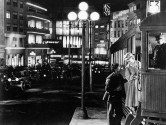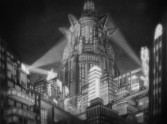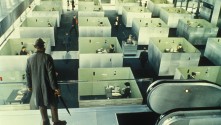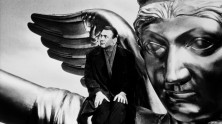
Imagining the City
Silent Shorts
Screening on Film
Shown at the Lumière brothers' first public film screening, the film has become the dominant symbol of early cinema. Beyond its iconic power, it still has the ability to delight, from the striking angularity of its composition to its record of the shy, curious glances of the passengers as they notice something new–a movie camera–in their midst.
-
A Romance of the Rail
Directed by Edwin S. Porter.
US, 1903, black & white, silent, 3 min.
Depiction of the dynamic motion of trains was a central draw of the early cinema. In this short, an engaged couple boards a train, then enjoys a pleasant sightseeing ride. The plot, though, is secondary to the attraction of a train (and a camera) in motion.
A concentrated form of the "city film," focusing on Marseilles's old port area. With limited film available to him, Moholy-Nagy, while he did not want to make an impressionist film, decided to make a "draft of the situation," and the result is indeed impressionistic; we are left with a feeling of the rhythms of the place and the vitality and desperation of the people who live there.
An inventor activates a device that puts the entire city of Paris to sleep, except for those who are high in the air. Albert (Rollan), who has been living atop the Eiffel Tour, descends to find the city in a state of suspended animation. Clair's film combines a surrealist sensibility with humanist insight and a lightly comic tone.

















